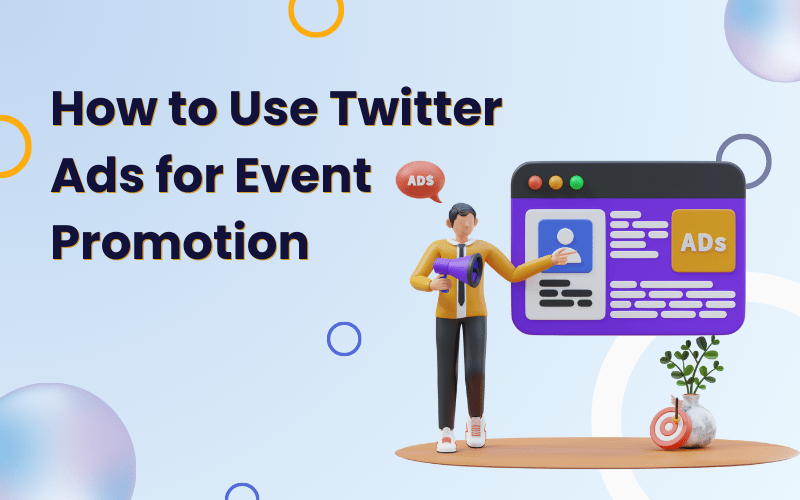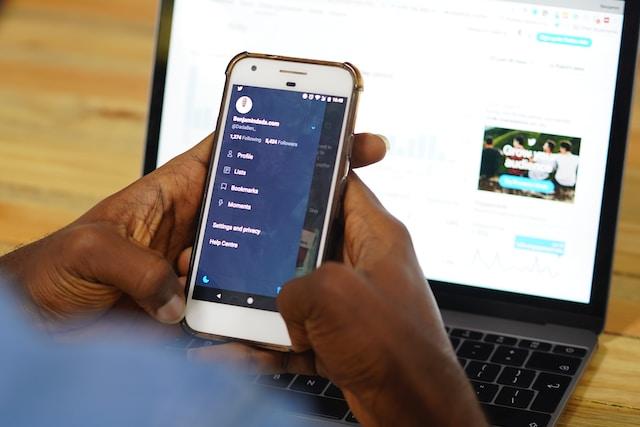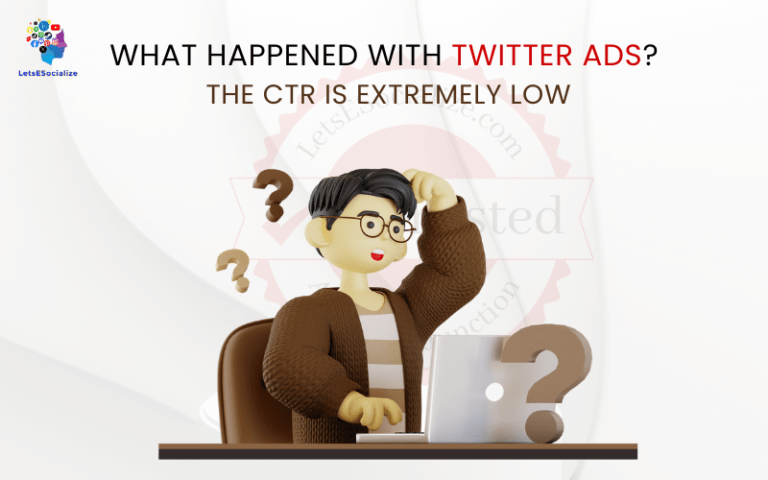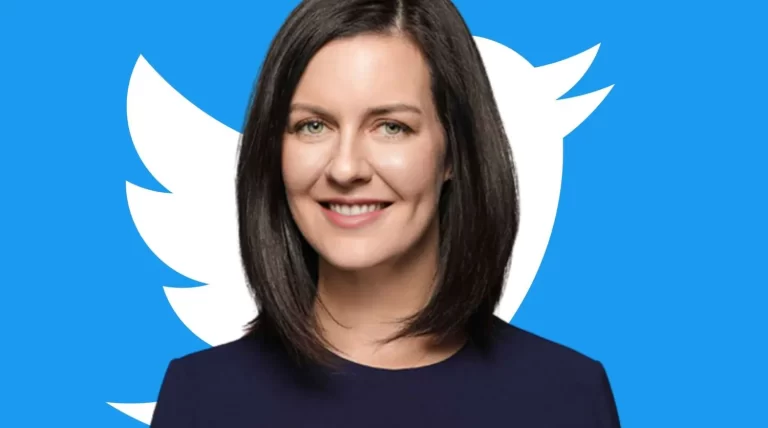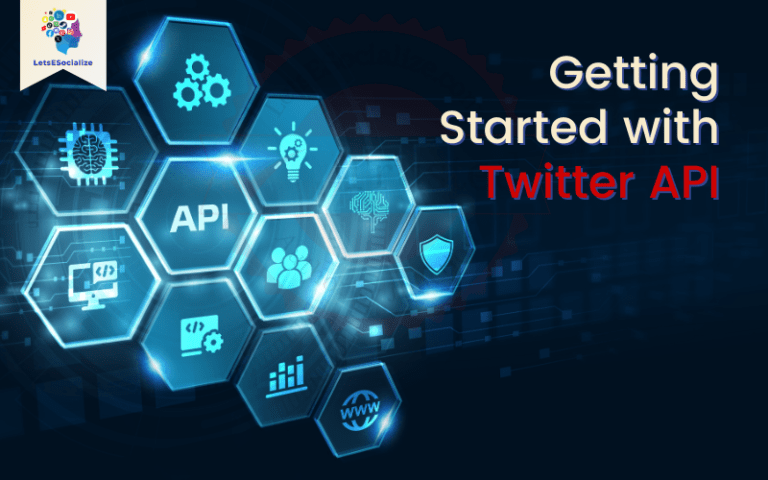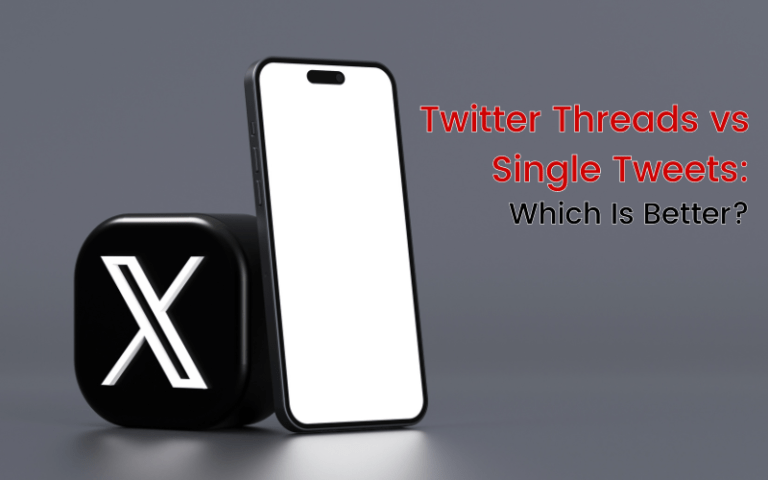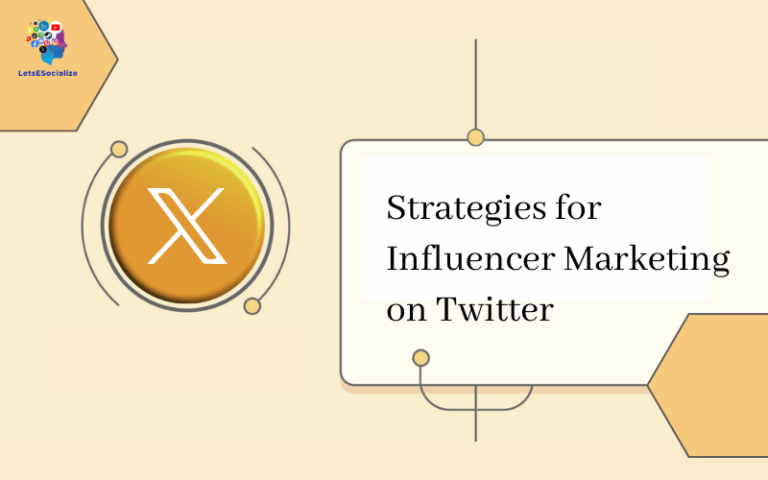Twitter’s massive audience reach and targeting capabilities make it a powerful platform for promoting events and driving ticket sales. This comprehensive guide will explore best practices for creating effective Twitter Ads for Event Promotion, awareness, and attendance.
Table of Contents
Overview of Twitter Ads for Event
Twitter Ads allow you to display Promoted Tweets, accounts, and trends to targeted groups of users. Here’s why they work well for event marketing:
- Reach specific audiences – Target attendees by location, interests, behaviors, keywords, etc.
- Drive discovery – Promote to users who may be interested in your event but aren’t already following you.
- Generate excitement – Share announcements, special promotions, speaker spotlights, FAQs, and more via Promoted Tweets.
- Retarget website visitors – Remarket to users who have visited your event site to nudge engagement.
- Flexible formats – Promote Tweets, videos, images, accounts, hashtags and apps.
- Robust analytics – Track meaningful metrics like ticket purchases or registrations to optimize ads.
- Real-time engagement – Interact with attendees and influencers to create buzz around events.
With the right strategy, Twitter Ads can become a significant driver of registrations and ticket sales for your events. Now, let’s explore how to create effective campaigns.
Also read: Understanding Twitter Advertising Platform
Before You Begin – Initial Setup Steps

Take these steps before creating your first Twitter Ads campaign for events:
- Set up a Twitter Ads account – If new to Twitter Ads, you must [apply for an account](https://ads.twitter.com/onboarding).
- Have an event listing – Your ads should link to a website or landing page with event details, ticketing, etc.
- Implement Twitter tag- Add the [Twitter tag](https://business.twitter.com/en/help/campaign-measurement-and-analytics/conversion-tracking-for-websites.html) to your site to track traffic driven by ads.
- Connect analytics platforms – Link your Twitter Ads data to tools like Google Analytics to combine insights.
- Establish goals and KPIs – Define what success looks like – registrations, attendees, revenue, etc.
- Plan ad content – Craft Promoted Tweets, images, and videos to share key event info and value.
- Set budgets – Determine what you can reasonably invest in Twitter Ads for the expected return.
With the basics covered, you’re ready to kick off your event promotion campaigns on Twitter!
Key Campaign Strategies and Best Practices
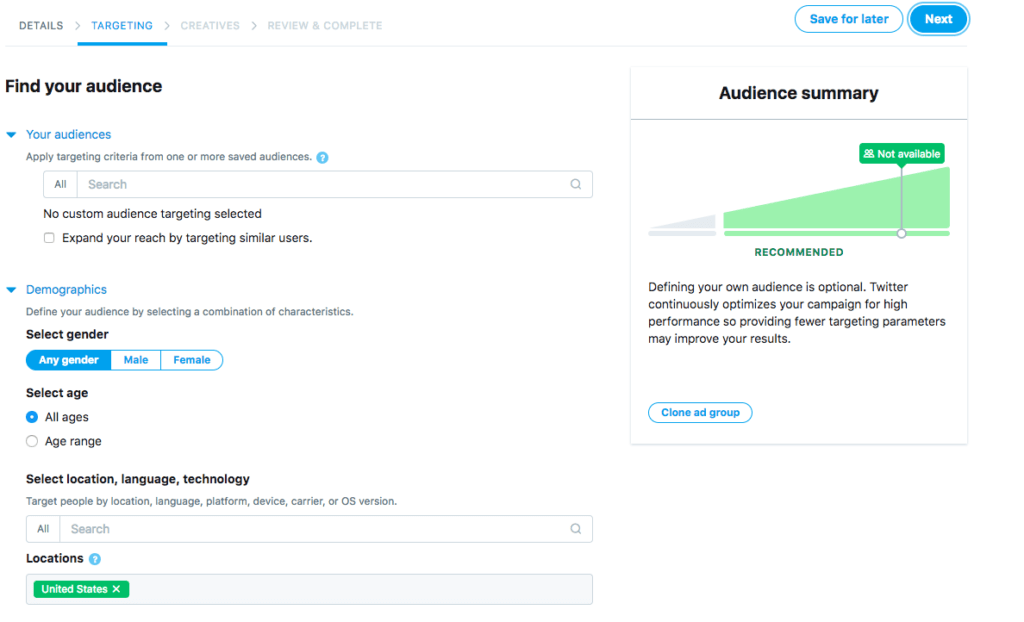
Approach your Twitter Ads initiative with these proven strategies in mind:
Hyper-Target Your Audience
Leverage Twitter’s extensive targeting capabilities to narrowly define your ideal attendees:
- Location – Target users in the geographic vicinity of your event.
- Interests and keywords – Focus on those interested in your event’s topic and themes.
- Follower look-alikes – Find people who follow similar accounts.
- Custom audiences – Build audiences from your existing contacts and customers.
- Conversation targeting – Engage users already tweeting about related subjects.
Constantly refine your targeting over time based on performance data to maximize relevance.
Promote Across the Buyer’s Journey
Develop distinct campaigns and messages tailored to different stages of the attendee lifecycle:
- Awareness – Broadly promote the event to drive discovery and interest.
- Consideration – To highlight value, share details on speakers, agenda, parties, etc.
- Conversion – Retarget engaged users and focus on call-to-action like ticket sales.
- Loyalty – Remarket to existing attendees to drive re-registration and referrals.
Craft Captivating Creative
Your tweets, images and videos are your best opportunity to capture attention. Follow best practices for compelling creative:
- Clear call-to-action – Ensure the desired next step is obvious.
- Relevance – Tie creative assets directly to your event theme and topics.
- Urgency – Consider limited-time offers or reminders about approaching deadlines.
- The value – Promote giveaways, exclusive speaker Q&As, party invites, and other perks.
- Visually appealing – Use high-quality photos, video clips, GIFs, and images to stand out in the feed.
Continuously A/B test new creative to improve performance over time.
Promote Special Offers and Discounts
Limited-time promotions can increase registrations and ticket sales:
- Spotlight early bird or flash sale discounts to drive urgency.
- Offer exclusive promo codes just for your Twitter followers.
- Consider free or discounted add-ons like VIP access, workshops or receptions.
- Promote contest giveaways like free passes or backstage access.
- Provide special loyalty discounts for returning attendees.
Time your promoted offers around expected registration and ticket buying surges for optimal impact.
Retarget Engaged Users
Create custom audiences of people who have already shown interest to keep your event top of mind:
- Site visitors – Retarget those who visited your event landing page.
- Video viewers – Reach people who have watched videos you posted.
- App installers – Remarket those who downloaded your event app.
- Tweet engagers – Target users who engage with your related tweets.
- Email subscribers – Reach existing newsletter subscribers.
Remarketing helps convert those already aware into attendees.
Amplify Relevant Influencers
Identify influencers who are attending your event or are interested in the topic. Amplify their content via engagement and Retweets. Consider Promoting their posts about the event to expand their reach. Also, explore paid partnerships and influencer collaborations to access their followers.
Optimizing Your Campaigns
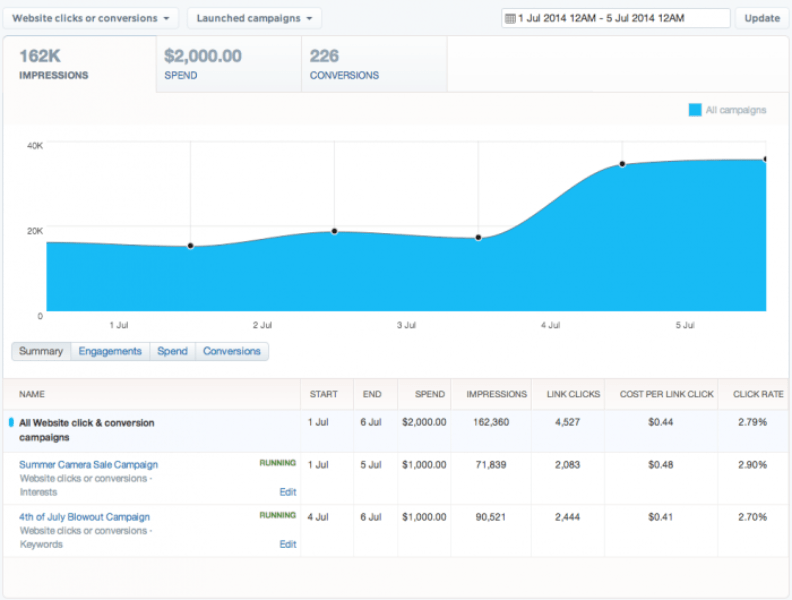
Consistently optimize your Twitter Ads approach using performance data:
- Analyze results daily – Review the latest metrics on reach, engagement, conversions, etc.
- Monitor costs – Keep cost per ticket sale/registration within target goals. Reduce bids if CPCs are too high.
- Identify high performers – Note which audiences, creatives, and offers perform well.
- Kill underperformers – Prune what’s not working to focus spending on what drives results.
- Watch engagement trends – Spot positive or negative response patterns as you promote different event aspects.
- Refine targeting – Tighten or loosen audience targeting based on who is engaging and converting.
- Update ads frequently – Test new messaging and creatives to beat creative fatigue.
By constantly optimizing based on the latest data, you’ll maximize the impact of your Twitter Ads spend.
Measuring Results and Calculating ROAS

It’s essential to monitor analytics beyond vanity metrics like followers and impressions. Focus on these bottom-line event success metrics:
- Website visits
- Ticket purchases or registrations
- Referral traffic
- App downloads
- Email list sign-ups
Import Twitter Ads data into your analytics platforms. Calculate your Return on Ad Spend (ROAS) regularly by dividing campaign revenue by cost:
ROAS = Revenue / Ad Cost
Aim for a healthy ROAS of at least 2-3x. If ROAS dips below targets, revisit targeting and creativity.
Creative Best Practices and Ideas
Driving strong event results with Twitter Ads means mastering ad creative best practices:
Compelling Copy
- Get attention quickly with headlines and hooks relevant to your audience.
- Communicate key details – date, location, speakers, discounts, agenda highlights, etc.
- Use a conversational tone – avoid overly sales or corporate jargon.
- Include a solid call-to-action – Register, Buy Tickets, Learn More, etc.
Dynamic Visuals
- Hero graphics with big, bold text overlays are eye-catching Twitter ad formats.
- Short videos give a preview of the event experience and atmosphere.
- Carousels allow scrolling through multiple agenda items or speaker bios.
- GIFs attract notice by catching the eye with motion in the timeline.
- Behind-the-scenes photos build excitement and provide social proof.
Retargeting Ads
- For visitors who didn’t convert, retarget them with follow-up offers and exclusives.
- Send final reminder ads right before registration closes.
- Remarket past attendees to drive repeat registrations.
Lead Gen Cards
- Collect info from interested prospects with in-feed Lead Gen Cards instead of sending them to the site.
- Use as initial lead capture for retargeting ads driving to ticket sales pages.
Interactive Polls
- Build buzz and get quicker feedback with interactive Twitter Polls.
- Poll on session topics, pricing, locations, special guests etc.
Sample Campaign Concepts and Tactics
Here are some example campaign ideas to spark inspiration:
Launch Campaign
- Announce event dates along with a compelling hook and call-to-action.
- Share major keynote speakers secured if names will excite attendees.
- Promote launch discounts/special offers to incentivize early registrations.
- Poll followers on topics, locations or pricing options to build engagement.
Speaker Spotlights
- Share speaker names, headshots, bios, and relevant past talks.
- Promote speaker Q&As, receptions, or breakout sessions.
- Curate relevant past content like blogs/videos for each speaker.
- Leverage speakers’ followers through influencer partnerships.
Agenda Rollouts
- Release agenda in sections over time to fuel ongoing buzz.
- Share session topics, times, locations, and descriptions.
- Tag any influential speakers involved to expand reach.
- Poll followers on agenda topics or sessions they are most interested in.
Early Bird Promotions
- Offer generous but time-limited discounts on passes for urgency.
- Promote via both general awareness and retargeting ads.
- Remind users when discounts end soon to drive last-minute conversions.
Referral Programs
- Encourage shares, retweets, and referrals with incentives like free passes.
- Track referrals with campaign tags or custom links to attribute sign-ups.
- Promote referral perks to spread the word further.
Countdown Clock
- Share an eye-catching countdown clock graphic as the date approaches.
- Reinforce scarcity and urgency with “Limited spots remain!” or similar messaging.
- Poll followers on their level of excitement as the day draws near.
Additional Promotion Channels
While Twitter Ads should be a primary component of your event marketing initiatives, also leverage:
- Email – Promote registered attendee lists and segmented audiences.
- Social media organic – Post natively on Twitter, Instagram, Facebook, LinkedIn, etc.
- Influencer marketing – Partner with relevant influencers to tap into their reach.
- Live streaming – Give sneak peeks on platforms like YouTube, Twitch, etc.
- Paid search – Run Google Ads campaigns to catch searches for your event name and keywords.
- Retargeting – Continue retargeting across the web via platforms like Google Display Network.
- Content amplification – Promote event content via paid social amplification tools.
- TV and radio – Use traditional channels for major high-budget events.
- Print – Take out ads in industry publications and local event calendars.
- Direct mail – Mail postcards or invites to local target households if appropriate.
- Signage – Advertise on billboards, transit ads, street teams, etc. for major events.
The more touchpoints, the better! Use Twitter Ads as the hub surrounded by complementary awareness channels and retargeting.
Measuring Results Across Channels
When running a multi-channel initiative, make sure you can track attribution and optimize accordingly:
- Use UTM campaign tags to label links from each platform.
- Implement marketing automation workflows to track touchpoint attribution.
- Connect Twitter Ads to analytics platforms like Google Analytics.
- Identify your highest converting channels, creatives and tactics.
- Share learnings across teams and reallocate budgets to what works.
Ongoing optimization allows you to maximize the impact of every promotional dollar spent.
Optimizing Ads on Autopilot
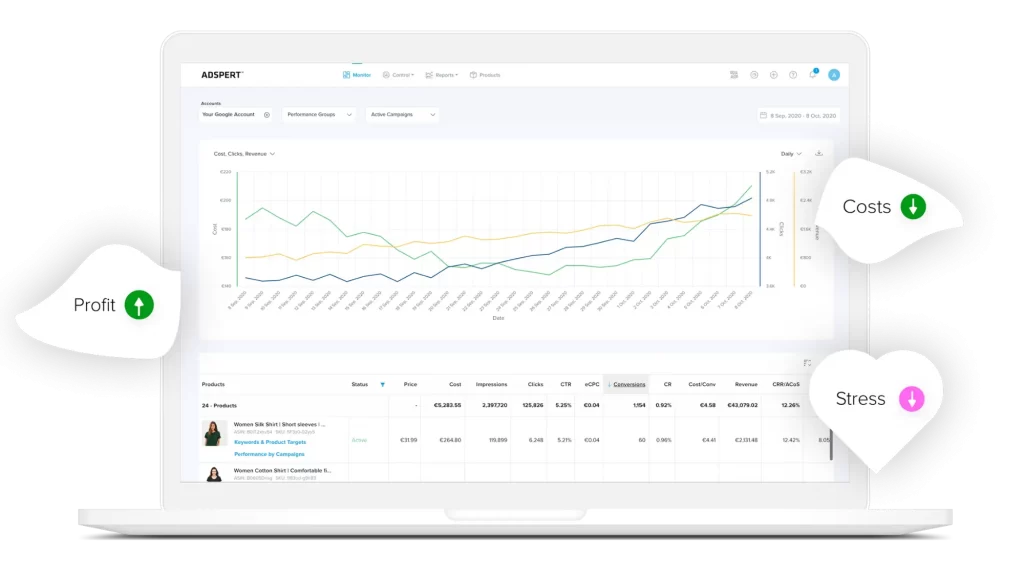
For hands-off campaign management at scale, consider leveraging automation and AI-driven optimization:
Twitter Automated Bidding
Let Twitter’s systems automatically adjust your bids to optimize campaigns based on your goals and constraints. Automatically respond to market changes faster than manual tuning.
Third-Party Bidding Tools
Use demand-side platforms like TradeDesk or Amobee to apply AI and automation to Twitter Ads bidding strategies.
Creative Optimization
Automatically generate and A/B test variations of ad creative using tools like Persado, Adobe Advertising Cloud Creative or Sway. AI identifies top performers.
Marketing Automation Rules
Trigger automated actions like adjusted bids and budgets in response to conversions, time of day, budget pace and other factors.
Analytics Integration
Pull campaign data into business intelligence tools like Looker or Google Data Studio to automatically surface optimization insights.
Automation frees you to focus on strategy and creative ideas vs manual tactical campaign tuning.
Key Takeaways and Next Steps
The keys to Twitter Ads success for promoting events include:
- Hyper-targeting your audience.
- Optimizing across the buyer’s journey.
- Testing creative variations.
- Launching strategic campaigns.
- Tracking real business results.
As the next steps after reading this guide:
- Set up conversion tracking for your event site.
- Build initial event promotion ad creatives.
- Define your target audiences and campaign objectives.
- Establish success metrics and ROI goals.
- Plan an impactful sequence of campaign launches and promotions.
Then, monitor performance daily and optimize bids, targeting and creativity to maximize your event marketing ROI. Twitter provides the audience reach and tools – now get out there and fill those seats!

